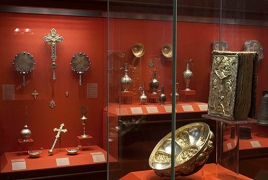
Urartu-Armenia
Hermitage displays a large collection of Armenian ancient and medieval culture (from the pre-Urartian period till the 18th century). Over 1,500 showpieces from both Armenia and locations beyond its borders, including the famous Cilician pyxis, are displayed at pavilions 63 and 63a of the Winter Palace. There are also works by silver jewelers, church and everyday objects, as well as khachkars.

On the left: a door decorated with sculptures (St. Sargis Church, Feodosia, Crimea, 1371).On the right: the cover of a Gospel book depicting the Crucifixion (Genova, 1347)
Hermitage showpieces include fragments of architectural constructions, rock and wood carvings, samples of monumental arts, miniatures, items made of bronze and gold, coins, seals and others.
A winged lion with human face (8th-7th century BC), pyxis (Cilicia, 1293), a door decorated with sculptures (St. Sargis Church, Feodosia, Crimea, 1371), the cover of a Gospel book depicting the Crucifixion (Genova, 1347), a bas-relief portrait of Prince Each with his son Amir Hassan (Surb Astvatsatsin Church, Yeghegnadzor, 1321), Evangelist Ghukas miniature (late 13th-early 14th century, Cilicia).
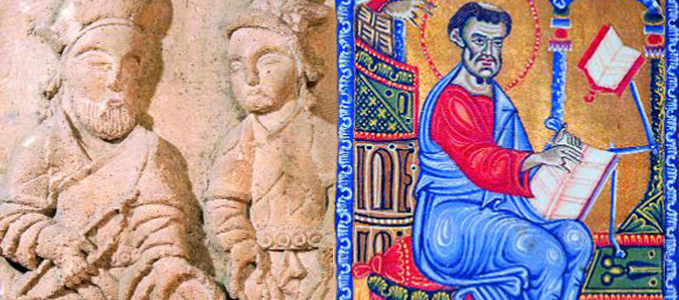
On the left: a bas-relief portrait of Prince Each with his son Amir Hassan (Surb Astvatsatsin Church, Yeghegnadzor, 1321). On the right: Evangelist Ghukas miniature (late 13th-early 14th century, Cilicia)
Hellenic culture is presented with a unique item – head of a column of Garni pagan temple gifted to the museum by the Armenian government.
Urartu pavilion showcases exceptional samples dating back to the 9th-7th century BC. Hermitage director Mikhail Piotrovsky says the items are unique and occupy a special place among the other showpieces.
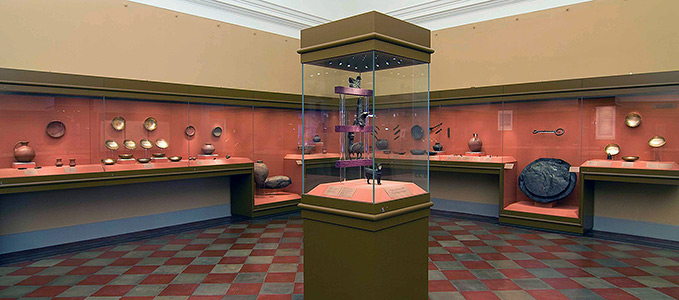
Urartu pavilion
The pavilion is dedicated to archeologist Boris Piotrovsky, who participated in excavations in Karmir Blur (translated as Red Hill) in 1939-1971, and most of the exhibited items were discovered during that time.
Karmir Blur is a fortified settlement from the end of the 2nd millennium BC. The site is located in Yerevan on the right bank of the Hrazdan River, near the highway that runs from Yerevan to Yeghvard. In 1936, geologist A. Demekhin found a fragment of stone with cuneiform inscription which mentioned “Rusa Argishti-hini” which means “Rusa, son of Argishti” known as Rusa II. This discovery entailed a series of archaeological excavations curried out by expedition of Armenian Academy of Sciences with participation of specialists from Hermitage and the Institute for the History of Material Culture at the USSR Academy of Sciences. Objects found at the site were predominantly made of bronze or iron. Other artifacts that were unearthed include pottery that has either been painted black or has painted designs such as waves of water, and items such as belts, ornaments, glass beads, and weapons such as daggers and lances.
The helmet of King Sardur (764-744 BC), bronze armor, cuneiform records, clay plates for cereals and jugs for wine, as well as jewels found during excavations in Rusakhinili (an ancient fortification near the city of Van) are displayed at Urartu pavilion.
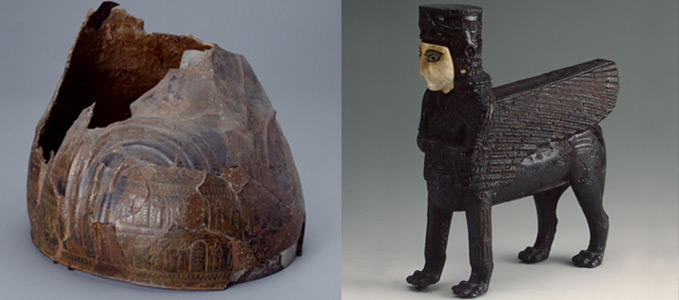
On the left: King Sardur’s helmet (764-744 BC). On the right: winged lion with human face (8th-7th century BC)
In 1959, Kurds discovered and robbed an Urartian tomb at the bank of river Arax. Some parts of it, including a bell with an inscription made by King Argishti I dating back to the 8th-7th century BC, were later found in Armenia and sent to Hermitage.
The museum also possesses a bronze bowl belonging to King Sardur.
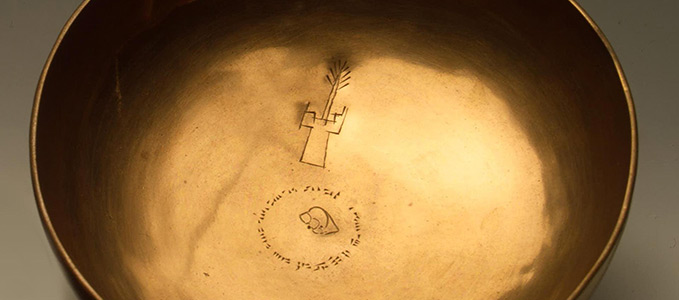
King Sardur’s bronze bowl

